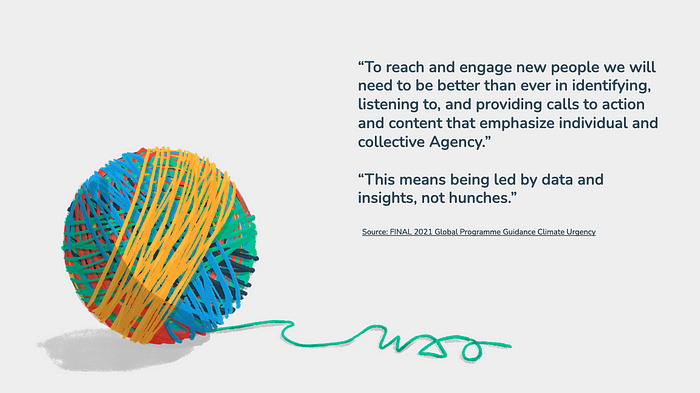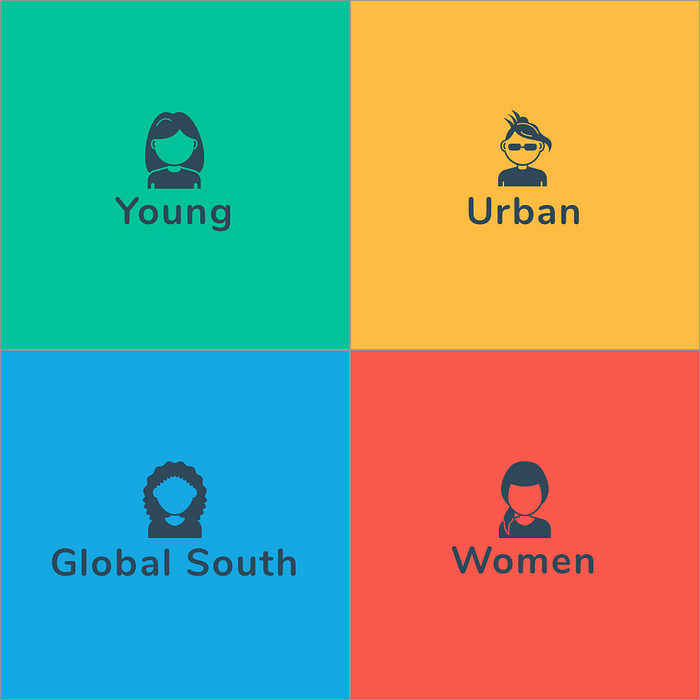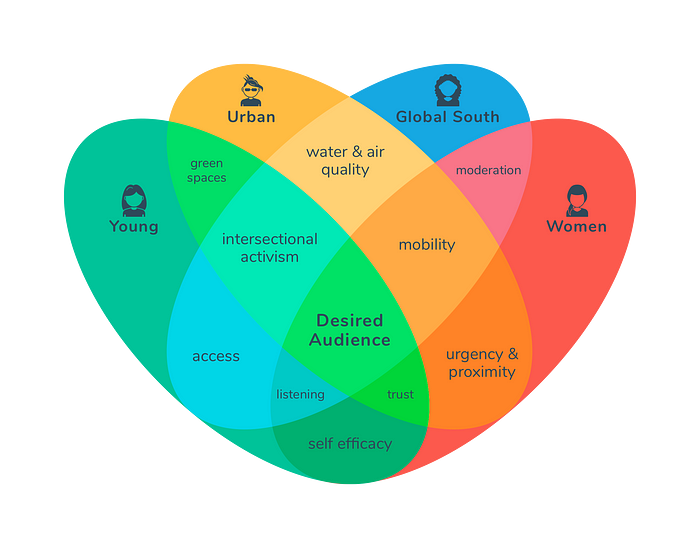An attempt to simplify complexity in content
Just want to learn how to do your own Audience Ikigai? Head over to our template and guide on Learn with WAO!
In the Web Strategy implementation project we’ve been working on with Greenpeace International (GPI), we’ve been researching. We’ve been looking through GPI programme guidance, channel strategies, engagement plans and geo-prioritisation projects to understand the strategy behind communicating with certain audiences. We’ve been looking into research outputs from The Internet to find insights that can help GPI communicate with intention.

Mostly, we’ve been digesting all of this information and trying to come up with an idea that can help a global team of storytellers and communicators make sense of a very complex information landscape that is the Greenpeace global network. We came up with an Audience Ikigai, and it’s kind of great.
Complexity in Audience
The complexity surrounding any global audience can’t be understated, really. I mean, we’re talking about millions of people. GPI communications have to take into account that many are coming to Greenpeace for the first time, while others know the organization well. The audience is diverse. From young to old, every color and creed, a massive spectrum of people who are interested in the mission to “ensure the ability of the earth to nurture life in all its diversity.”
No global organization can resonate across the board with every single person, which is why strategic decisions are made. The best way for GPI to have global impact is to focus its website content, and we’ve been researching the best way to do that.
Speaking with GPI’s Desired Audience

Over the last years the organization has clearly defined the desired audience through its various projects. The Comms Department summarised this audience in their own channel strategy. This desired audience is listed in no particular order.
Young (18–34)
Not only are they the tastemakers and cultural influencers we need to begin to tap to spread our campaign messages for us […], they’re also the fastest growing group of social media users. This age demographic spends more time online than its older peers, making it easier to reach […]. On channels where user growth is expected to grow among this age group, […] we can strive to do both.
Urban
As articulated in the global programme guidance, cities are at the forefront of change on many of the issues we campaign on. At the same time, we must seek to shift the mindset that an “urbanized” lifestyle is one defined by consumption and separation from the natural world. For these reasons as well as their organizing potential, urban dwellers are a key audience across channels.
Global South
This focus is spelled out clearly in the conclusions of the geo-prioritisation exercise. As the Global South rapidly urbanizes, focusing our growth on both the Global South and cities should be mutually reinforcing in reaching high-potential new audiences.
Women
“This fight is not gender neutral: women are disproportionately affected by the impacts of climate change, and at the same time, climate change denialism is strongly connected with accepting patriarchal structures.”
Audience Ikigai

Through our research, we identified 3 desires and/or areas of focus for each kind of audience. We read papers about those areas of focus and distilled (a great deal of) information into an overview slide deck. We pulled content from across the Greenpeace global network to provide examples.
As we were creating this piece of work, we kept asking ourselves “Ok, but how do you focus on the very specific group that is “young, urban women in the Global South?”
Enter the Audience Ikigai.
- The outer ovals of the Audience Ikigai are the “non-specific” audiences. Women and young people are found around the world in every city, village, rural district. Women are 50% of humanity as are young people.
- The inner ovals are the slightly more specific audiences, although they are, still, incredibly large audiences. Global trends show that people are moving into urban areas, and our inference is that young people move to urban areas. Women do as well, of course, which is the magic of the Audience Ikigai — your inference matters.
The Audience Ikigai will shift depending on the assumptions we make. Each of the desires and areas of focus for the various audiences is layered on our Ikigai image. It could be done in a different way, but after all that research, we had a sense of sureness as to which bits overlapped.

Why is this useful?
We have created a resource that GPI comms folks can use to overlay content streaming in from various campaigns and offices. This can be used to check if something is appropriate for the Greenpeace International website audience, or if it needs to be rewritten or looked at from a different angle. It provides a framework for focusing and streamlining that incredibly complex information ecosystem.
Make your own
We thought this was such a useful exercise, that we created a template for other organisations and thinkers to use. You can check it out here.
Special note: Doug and I would like to offer a a huge public kudos to WAO’s intern, Anne Hilliger, who did some very heavy lifting on this work.
Attribution: Our version of the background is inspired by this Information is Beautiful version.